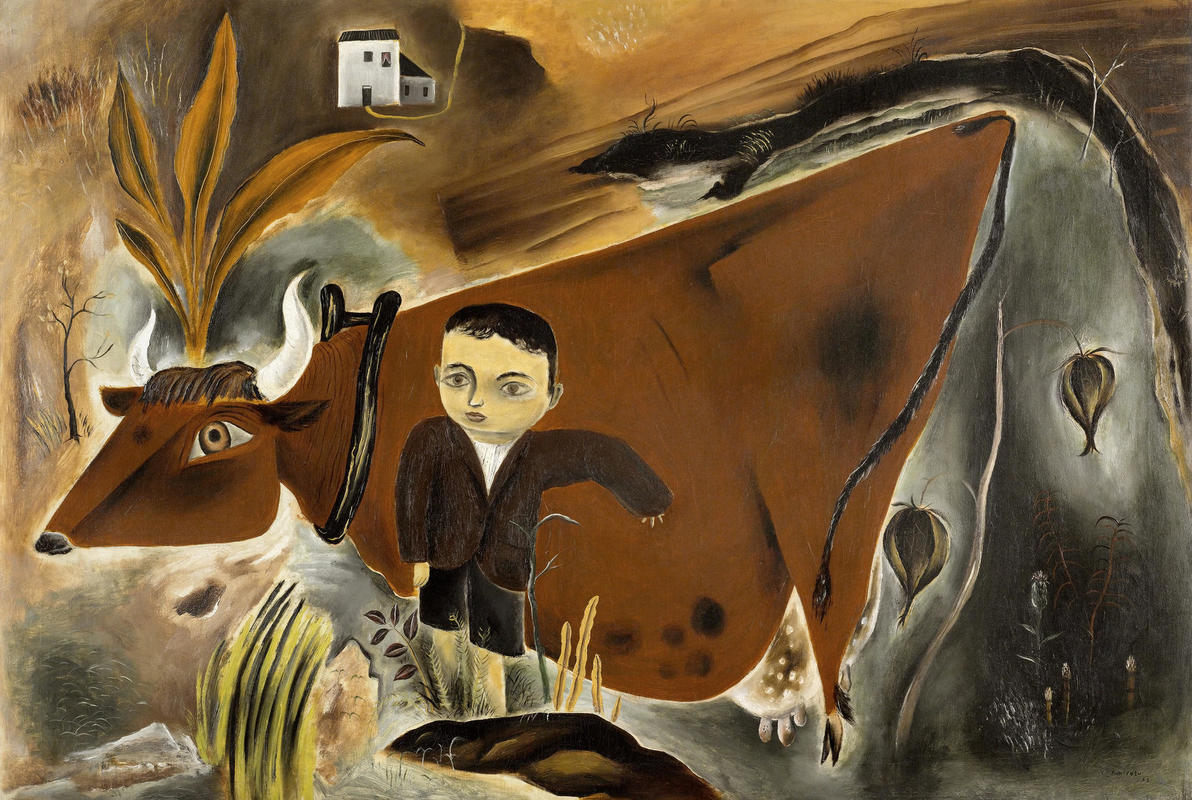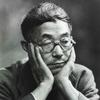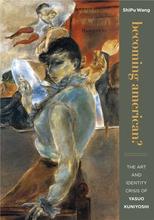More about Little Joe with Cow
- All
- Info
- Shop

Contributor
Believe it or not, Little Joe With Cow is one of Yasuo Kuniyoshi’s most famous pieces.
Which begs the question: how come you probably haven’t heard of it? During his life, Kuniyoshi was considered one of the best artists of the era, exhibiting his work alongside renowned artists like Georgia O’Keefe and Edward Hopper. The Whitney was so impressed they literally changed their policies to give him a retrospective exhibit, as he was still alive. His work was featured everywhere from the 1932 Olympics (art was *briefly* considered a sport) to the prestigious Downton Gallery in New York, where Little Joe With Cow made its artistic debut. But after Kuniyoshi’s death, much of his work went ignored.
This is likely due to a few different things: firstly, that people were (sadly) kind of over modernism by the end of the twentieth century. Secondly, there is the unfortunate truth that the art industry, in choosing who to venerate, remains largely white - in life as well as death. Museums predominantly feature white artists; the exceptions are often shows set aside as “just for” Asian artists— and even these museums often have their own complicated histories.
But, even foisted against the background of all that prejudice, Kuniyoshi’s Little Joe With Cow received general critical acclaim, by the critics of its own era and the critics of today.
The piece was created in the early '20's, a decade largely considered to be Kuniyoshi’s prime. Coming straight off of four years with the Art Students League, Kuniyoshi had begun to play with his distinct fusion of American, European, and Japanese art. His style was becoming more and more distinctive and he began to establish an artistic vernacular that he would engage with for years to come.
Like much of Kuniyoshi’s work, Little Joe marries a few different styles, borrowing from the angularity of Cubism, while also using a more fluid, calligraphic style reflective of Japanese art traditions. It uses a lot of free-flowing lines (just look at those plants!) alongside the rigid, harsher borders of the cow itself, which is essentially just a big ol rectangle of brown.
It’s also worth noting that the tiny boy in the painting is Japanese. His body, juxtaposed against the massive cow, can also be seen as carrying a second level of significance in combining American and Japanese traditions; raising cattle for beef wasn’t really a thing in Japan until the early 1960’s, whereas it’s had prevalence in the United States since the 19th century.
Sources
- Bishara, H. (2019, June 3). Artists in 18 major US museums are 85% White and 87% male, study says. Hyperallergic. Retrieved September 20, 2021, from https://hyperallergic.com/501999/artists-in-18-major-us-museums-are-85-….
- CULCON. (n.d.). Beef Cattle In Japan. Beef cattle in Japan. Retrieved September 20, 2021, from http://www.crosscurrents.hawaii.edu/content.aspx?lang=eng&site=japan&th….
- History on the Net. (2019, January 31). American West - The Cattle Industry. History on the Net. Retrieved September 20, 2021, from https://www.historyonthenet.com/american-west-the-cattle-industry.
- Pilarski, M. (1999, December 10). The language of craps. Casino City Times. Retrieved September 20, 2021, from https://www.casinocitytimes.com/mark-pilarski/article/the-language-of-c….
- SAAM. (n.d.). The artistic journey of Yasuo Kuniyoshi. Smithsonian American Art Museum. Retrieved September 20, 2021, from https://americanart.si.edu/exhibitions/kuniyoshi.
- Smith, R. (2015, July 23). Yasuo Kuniyoshi, a modernist often overlooked, gets a Smithsonian retrospective. The New York Times. Retrieved September 20, 2021, from https://www.nytimes.com/2015/07/24/arts/design/yasuo-kuniyoshi-a-modern….












